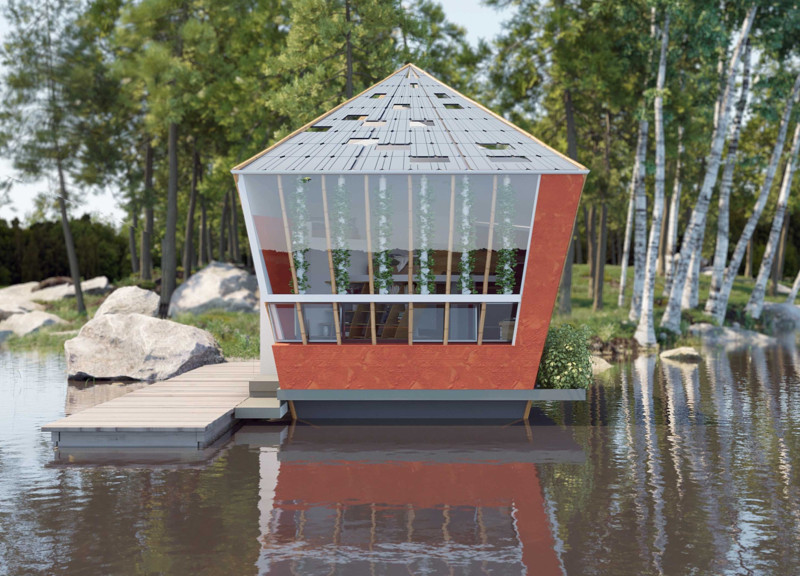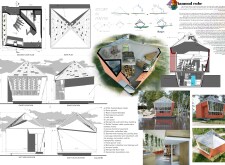5 key facts about this project
The Diamond Cube is a modern home designed to be placed in various locations, including land, deserts, or water. It occupies 25 square meters and serves young couples. The design focuses on sustainability by generating energy from the sun and allowing residents to grow their own food through a hydroponic system. This approach promotes a self-sufficient lifestyle.
Interior Configuration
The interior layout is open and flexible, enhancing the functionality of the space. A key feature is a custom loft bed that includes storage shelves, a bench, and a work table. This setup provides access to the loft above and allows multiple uses, such as a relaxation area or workspace. The design maximizes vertical space while maintaining a compact footprint.
Sustainable Features
Sustainability is a core aspect of the Diamond Cube. The cooking area is conveniently located next to the hydroponic system, enabling the growth of fresh produce that provides natural shading in the interior. Rainwater is collected using a sloped roof, and this water is stored in a basement. The basement also acts as a geothermal heating and cooling system, contributing to energy efficiency in the home.
Material Selection
The Diamond Cube is built using materials selected for their functionality and environmental impact. Bamboo, treated with resin for added strength, serves as the main structural component. Hempcrete is used for insulation, allowing for a lighter building. The exterior is clad with clay that turns into terracotta as it dries in the sun, adding both visual appeal and performance benefits. The roof features PTFE fabric that accommodates solar panels, supporting energy collection.
Functional Systems
The basement goes beyond simple storage. It features a Tesla power wall for energy management and includes a sewage treatment system that purifies waste. This waste is converted into nutrients for the hydroponic system, creating a closed-loop system that is practical and eco-friendly. The design of the Diamond Cube represents a thoughtful approach to efficient living, showing how modern homes can work in harmony with nature to promote a self-sustaining way of life.



















































